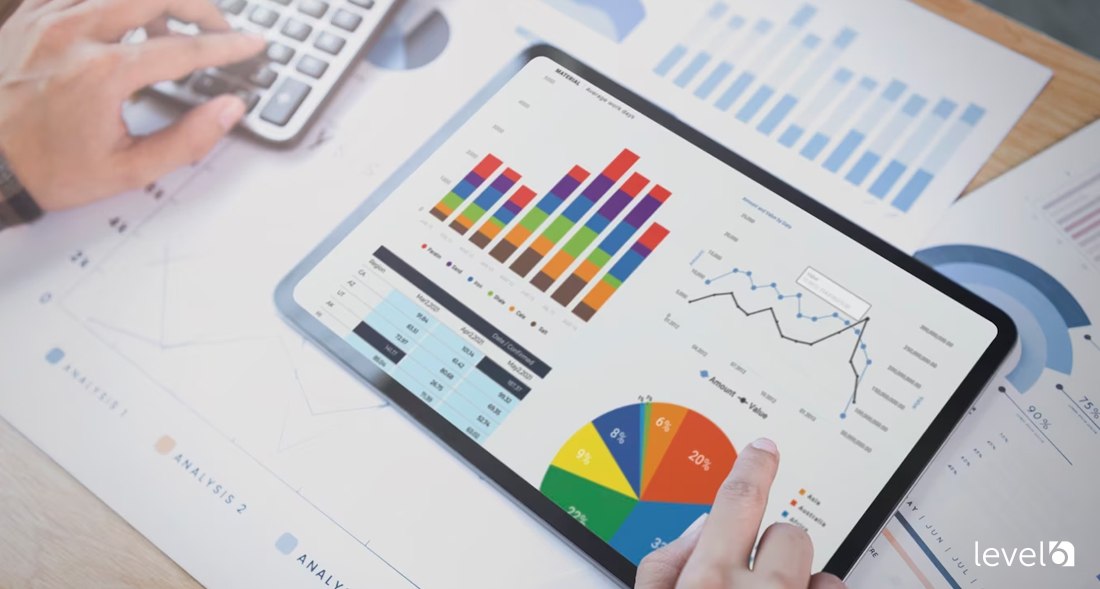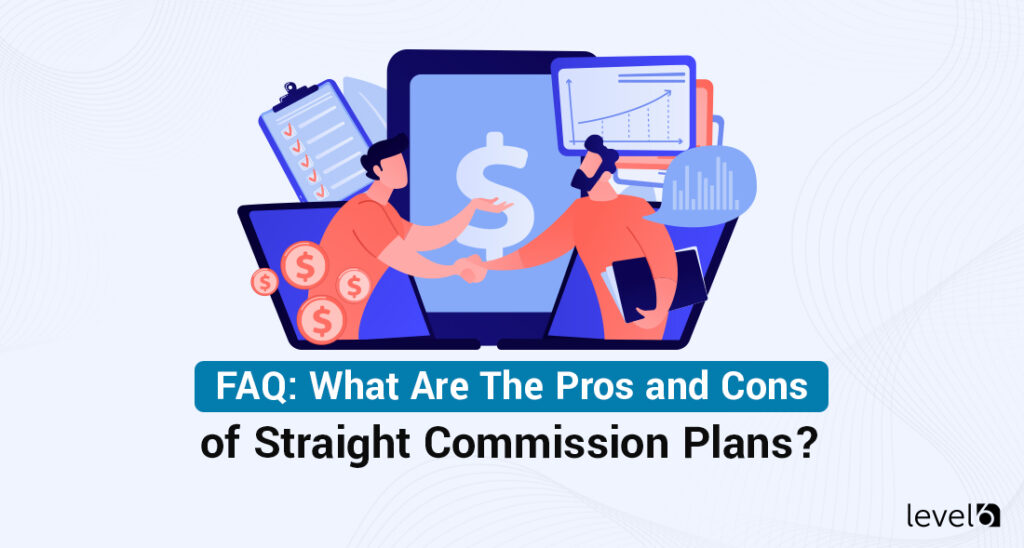Accurate sales forecasting helps keep your sales team engaged, your organization in good health, and your leadership in good spirits. As you know, “nothing happens in business until someone sells something.” While sales, operations, and finance work together to make a successful business, the whole organization ultimately hinges on sales.
While it’s good news if your numbers are healthy right now, that doesn’t give you any information about what to expect down the road. Through the process of sales forecasting, you can work to create expected sales numbers for specific periods in the future.
Having access to an accurate sales forecasting process can mean the difference between success and failure in a volatile or changing market. Let’s look at eight of the most note-worthy benefits of accurate sales forecasting for your business.
What Is a Sales Forecast?
Sales forecasting is a process that aims to accurately anticipate your future sales performance. Businesses can use sales forecasts to gain insight into future revenue and make more informed decisions.
Armed with this information, businesses can:
- Create human resources plans and organize staffing levels
- Forecast the expected profit or loss for a particular period
- Help sellers continue to grow by taking the most effective steps
- Adjust production to meet demand
- Offer sales leaders valuable industry insights
It’s common for sales forecasts to incorporate a combination of industry trends, historical data, and the current sales pipeline to estimate sales totals. These sales estimates can be for various timelines, such as weekly, monthly, quarterly, or annually.
You can think of a sales forecast as akin to a weather forecast. While the forecast provides additional information that your sales team can use to determine the most effective course of action, it’s important to remember that these numbers aren’t in any way set in stone.
The Advantages of Accurate Sales Forecasting
Is it really worth investing in accurate forecasting? Let’s take a look at the eight key advantages and how your forecasting strategies could mean the difference between success and failure for your business.
Looking to learn more about an incentive, rebate
or reward program for your business?
Curious about costs?
Try our instant pricing calculator:
1. Significantly Improves the Chances of Meeting Your Targets
It might not come as a surprise that organizations that utilize state-of-the-art sales forecasting technology are more likely to reach their targets than those that don’t. What you might not realize, though, is just how extreme the gap really is.
According to research released by The Aberdeen Group, only 55% of organizations met their target when they didn’t use industry-leading forecasting processes. The companies that did implement best-in-class technology, however, had a whopping 97% success rate.
2. Helps to Propel Growth
When you are utilizing the power of accurate sales forecasting, it practically gives you a crystal ball. You’re able to see the early warning signs that could indicate trouble down the road and change directions while you still have the opportunity.
According to the same study from The Aberdeen Group mentioned previously, teams that are on top of the ball when it comes to sales forecasting science are more likely to grow yearly revenue and outcompete their peers in the industry.
3. Provides Cost Savings
Another major benefit of accurate sales forecasting is that it allows you to plan production and procurement with a much higher level of accuracy. This means that you won’t deal with nearly as much waste or production overruns.
Beyond that, you’ll be in a better position to negotiate with your suppliers, which can also cut your costs.
4. Allows For Optimized Inventory Management
Maintaining the right amount of inventory at any given time is a challenge that all businesses face. Too much inventory, and you’re paying for it when it comes to production, storage, and other factors. Too little inventory, and you’re paying for it in lost opportunities, disappointed distributors, and unhappy customers.
Using accurate sales forecasting techniques can ensure that you aren’t paying any more for storage than you need to, producing excess inventory, or running the risk of product obsolescence. At the same time, you can always know that you will have the products your distributors and customers need when they need them.
5. Helps to Quantify the Health of Your Organization
It’s easy to think of your sales forecast as just another sales metric. The truth is, though, that forecasting can help illustrate just how healthy and effective your organization is as a whole.
This is because it isn’t just about sales– it also depicts your company’s success in terms of marketing and customer success.
6. Promotes Effective Resource Allocation
When you have accurate sales forecasts in your arsenal, you are much better able to allocate your resources effectively. Having this knowledge can ensure that the right resources– such as staff and equipment– are in the right place at the right time to meet your customers’ demands.
At the same time, proper resource allocation can ensure that your employees and the organization as a whole aren’t overburdened by that same demand.
7. Allows For Informed Decision Making
The market moves quickly these days, and access to the right information at the right time is vital to a business’s success. While quarterly or annual planning might have been sufficient historically, every organization needs to be able to respond quickly and with agility to keep pace with today’s market.
Through the information provided by accurate sales forecasting, organizations can make informed decisions about hiring, resource allocation, effective risk management, marketing campaigns, and so much more.
8. Improved Customer Relationships
At the end of the day, isn’t success really defined by how happy your customers are? You will be much more able to consistently meet customer demand through accurate sales forecasting. This means, in turn, that you’ll experience higher customer loyalty and satisfaction as well.
You’ve likely had an experience when you need a product that simply doesn’t seem available for purchase. Even if you had a specific brand in mind, you likely didn’t take too long to hand your dollars over to someone else with consistent availability.
There is nothing more heartbreaking in the business world than knowing that a customer wants to buy one of your offerings, but you can’t provide it for them. When you have the power of accurate sales forecasting, you can reduce or even eliminate the occurrence where a product isn’t available for a customer who is actively trying to buy it.
Making sure your products are available and easy to buy can have a rippling positive effect on your organization. Not only does it mean you didn’t lose a sale, but it also helps to foster positive customer relationships and could even help lead to referrals and repeat business.
Essential Steps for Accurate Sales Forecasting
Ideally, sales managers will create a framework that they can use for their sales forecasting plan every year. At the same time, it’s important to remain adaptable and agile to respond to changing markets.
To create a sales forecasting plan, you’ll want to take the following steps.
Identify Your Sales Process
There are a lot of factors that can influence the accuracy of your sales forecasting. You want to keep in mind that your numbers won’t be nearly as accurate if your sales team isn’t following a consistent set of steps throughout the sales process.
Before you even begin creating a sales forecasting plan, it’s important to standardize your sales process. Make sure that everyone is on the same page and willing to agree to the new arrangement. As a part of this process, you’ll need to create expectations for opportunities, leads, prospects, and closing.
Create Your Goals
It’s important to understand that your sales forecast and goals are separate elements of your sales strategy. Setting a target needs to happen first so that you can start gauging your performance accurately.
You’ll want each sales representative to have their own individual goals, while there should also be a shared target for the entire team. You can determine the right goals for both the individuals and the team by starting with creating an objective definition of success with the whole crew. You can then work backward from there to determine the sales quota that you feel is most appropriate.
Are you searching for ways to really get your sales team engaged and activated? Check out our list of sales contest ideas to help motivate your team.
Collect Data
Any viable sales forecast is going to include past sales data. However, there’s a lot more to it than that. Other departments beyond your sales team will have information that could help make your sales forecast more accurate.
For example, you might choose to include any of the following departments when you’re developing your forecasting plan:
- Finance: By bringing the finance team into your forecasting process, you can gain valuable insight into how your sales forecast aligns (or diverges from) the overall financial goals of the organization.
- Marketing: You’ll definitely want to involve the marketing team in your sales forecasting process. After all, their success or failure is directly related to your pipeline’s quality. Work with your marketing team to ensure you have a complete picture of their plans for the forecasted period.
- Product: It’s also important to factor in product launches or any other product changes that could impact your forecast. Including this information can make your strategy more holistic and well-rounded.
- Human resources: It’s possible that your sales goals for the future could impact employee resources in a way that requires that you connect with HR as well. Make sure you bring them into the fold so you can take a look at how your forecast could be impacted by personnel changes.
Review Old Forecasts
A great place to start when building a sales forecasting plan is to take a look at any previous forecasts if you have them. This will allow you to compare your current data to the data you collected in previous years.
Make sure you look for any discrepancies or variances and take the time to consider what lessons or takeaways make themselves apparent. This can help you create a benchmark you can use as you forecast the upcoming sales cycle.
Involve Your Sales Team
It’s important to keep your sales representatives fully informed about any changes or decisions regarding your sales forecasting method. Train them on how to achieve their goals and the best practices you are using moving forward.
Beyond that, holding them accountable based on their performance is important. On the flip side, make sure you go out of your way to recognize and reward them when they succeed. Make sure it’s clear that the communication lines are open both ways, and collect regular feedback about what they feel is working and what isn’t.
Choose the Appropriate Method
Finally, it’s time to pick the forecasting method that is right for your business. There are two primary choices: bottom-up or top-down.
Bottom-up sales forecasting assesses low-level data and works up to revenue in order to gauge a company’s future performance. Top-down involves analyzing high-level data and then working its way down to revenue in order to predict future performance.
Which strategy you use will depend on a number of different factors. These include how old your business is, how many employees make up your sales team, and the quality of your data tracking habits and sales data.
Keeping Your Sales Team Motivated
In any business, there are countless components that all come together to create a well-oiled machine. While accurate sales forecasting is essential to success in the modern business world, the promising numbers you predict won’t come to pass if your sales team slumps.
Managing sales reps’ motivation is an ongoing task for any successful company. At Level 6, we specialize in fully custom incentive and reward programs for sales teams, employees, customers, and more. If you’re eager to motivate your sales team to have the best quarter yet, schedule a call with us today.
Do you have any questions about accurate sales forecasting, our services here at Level 6, or anything else we mentioned in this article? If so, please feel free to reach out and contact us at any time! We’d be more than happy to assist you.

Claudine is the Chief Relationship Officer at Level 6. She holds a master’s degree in industrial/organizational psychology. Her experience includes working as a certified conflict mediator for the United States Postal Service, a human performance analyst for Accenture, an Academic Dean, and a College Director. She is currently an adjunct Professor of Psychology at Southern New Hampshire University. With over 20 years of experience, she joined Level 6 to guide clients seeking effective ways to change behavior and, ultimately, their bottom line.

 Demo
Demo

















